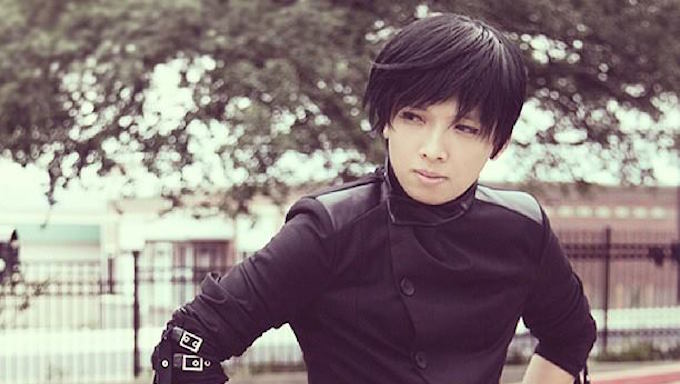
Monty Oum, the animator and video game designer who created the animated series RWBY for production company Rooster Teeth after a run overseeing RT’s signature show Red Vs. Blue, passed away this week. Oum fell into a coma after suffering an allergic reaction during a routine medical procedure, and he never woke up.
His passing was felt immediately in the Austin community, as well as the wider world of fans of original, web-based animation, video games, and the places where those two things overlap.
That’s a sizable group, even if Rooster Teeth and Oum have managed to fly largely under the mainstream radar: As Tom Barltett reported in Texas Monthly in December, the company’s 4 billion YouTube views—driven in no small part by the creativity of Oum—has helped make the company a powerhouse among younger, more tech-savvy audiences.
In the wake of Oum’s passing, the extent to which he was an important figure has only become more clear. The New York Times wrote about the grief felt by his fans on Thursday:
Even for people familiar with Mr. Oum’s presence and his work, the volume of grief was unexpected. The actor LeVar Burton was introduced to “Red vs. Blue” through his daughter, Mica, an avid gamer and anime fan. Ms. Burton, 20, a student at the University of Michigan, had called her father, upset, when news of Mr. Oum’s illness broke. Mr. Burton happened to be visiting her on the day the death was announced.
“When I arrived, she just fell into my arms, sobbing,” Mr. Burton said in a phone interview. She had met Mr. Oum briefly at a Rooster Teeth event, but “the depth of her grief was, and is, surprising,” her father said, a sentiment echoed by many parents this week. (He tweeted his condolences, too.)
Mr. Burton, the “Roots” star and a childhood hero to many as a host of “Reading Rainbow,” had his own theories about why Mr. Oum proved such a moving figure to young people. “The world has changed to the point that you can create and distribute without gatekeepers, and Monty was a wonderful example of that,” he said.
The fact that Oum meant so much to people might surprise readers who are new to the current creative paradigm, wherein someone can make and widely distribute art with only a laptop. But it was natural to those who recognized his outsized personality long before his tragic death.
I met Oum in 2013, as part of a profile on him and the launch of RWBY for the Austin Chronicle. Afterward, looking for a figure to compare him to for readers who were unfamiliar with Rooster Teeth, I settled on Kanye West. His personality and personal style were captivating, his creativity was relentless, and his ideas were exciting.
For anyone not familiar with his seminal shows, here’s a glimpse of what made his work so special.
1. ”Haloid”
Oum first came to prominence—and got offered his first jobs—after making a video called “Haloid,” that mashed up characters from the best selling games Halo and Metroid (in the end, they fall in love). It was a creative way to use game technology to create something original, and both game companies and production houses like Rooster Teeth took notice.
2. Afro Samurai
After the interest in “Haloid,” Oum opted to work in games, rather than pure animation. His crowning project was the adaptation of the Japanese comic book and Adult Swim cartoon series Afro Samurai. He worked on the project as a combat designer and animator.
3. Red Vs. Blue
Oum was disappointed with the reception to Afro Samurai, and the way the game’s publisher failed to promote it. So when Rooster Teeth checked in with him again in 2010, he decided to take a job overseeing the company’s Red Vs. Blue. Oum brought smooth animation and sharp visual style to the series.
4. RWBY
After three seasons of Red Vs. Blue, Oum wanted to pursue something markedly different—and, to keep the rising star around, Rooster Teeth decided to pursue its first traditionally-animated series, without a video game tie-in, in RWBY. Oum’s previous animation work required some degree of interest in video games, but RWBY only required an interest in storytelling.
The unexpected death of anyone who’s 33 and otherwise in good health is tragic, and RWBY offers some clear explanation as to why Oum’s passing resonates so strongly with so many people: Fans had seen Oum grow up as an artist in ways that we are rarely able to watch firsthand. His entire career spanned only 8 years, from making ”Haloid” in his bedroom to creating RWBY, and every part of it was done in public. The next Joss Whedon or George Lucas might, at any moment, be making video-game-fan videos at home, sharing them online, and then evolving his work into something that resonates worldwide. (RWBY, by the way, is the first American anime series to be exported to Japan.)
Even if Red Vs. Blue and “Haloid” are part of a cultural paradigm you know little about, and even if RWBY is a type of art you’re not particularly interested in, the fact that they exist, and were created without any of the resources that make the wildly popular television we see, makes Oum’s work worth celebrating.







